What an amazing weekend we’ve had! Brian and Monica have been amazing ambassadors to South Africa. While we are ever so grateful and indebted to them, we’re pretty sure that they’ve had as much fun as we’ve had!
We arrived at Kruger National Park on Friday afternoon. We were immediately besieged by sightings of wild animals near to the car that caused my jaw to drop. Seeing animals in the wild is a completely unique experience, and Kruger is the place to do it. Although there’s a fence around it in order to keep the animals from entering neighboring communities (this is more or less effective), the area inside the fence occupies about 8 million acres! The wild animals within this vast expanse of various terrains include the Big 5: elephants, rhinoceros, leopards, lions, and buffalo, along with thousands of other bird and animal species. All of these roam freely and occupy their place in nature’s food chain with relatively little interference from us humans. Given the fairly high risk of encountering animals that could and would make short work of a human being, humans are required to remain in their vehicles at all times in the park unless otherwise indicated and face a 1500 Rand (over $200) fine if caught taking photos out of the car. Fortunately for us, there is an abundance of animals in the park, and many of them cross public roads or hang out quite near them, thus placing themselves in prime position for observation from us voyeurs.
Just to give you an idea of the frequency with which we sighted something interesting while in the park, here is a sample of my notes from our first afternoon in the park:
1:27 squad of bachelor impala with oxpecker bird eating out of ear
1:32 female and male waterbuck
1:37 vervet monkeys hanging at camp we drove through
1:37 hornbill bird
1:39 guinea fowl in road
1:44 herd of waterbuck crossing road
1:52 2 young elephants!
1:56 herd of buffalo in distance
2:02 HUGE (200) herd of buffalo gathering at water hole with big line of them advancing to join
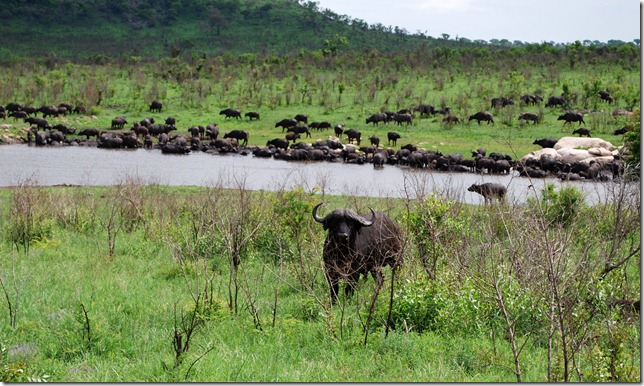
One of the larger water buffalo crossed the pond and checked us out before moving on in search of food
2:02 3 elephants near water hole
2:07 sakubula bird with long tail
2:07 2 hippos in water hole
2:15 3 large elephant and waterbuck near waterhole but staying away because outnumbered by buffalo
2:27 buzzard
Not bad for our first hour, hey? (The ‘hey’ at the end of the sentence is very South African and much like the Kiwis use of ‘ay’). Our sightings got better and better as the weekend progressed. It turns out that Dallas has the eyes of a vulture and can pick out a rhinoceros, for example, from a mile away. The combination of his eyes and the Houghs’ knowledge of the park led us to see all of the Big 5 in one morning! Included in our personal top 5 list were some spectacular sightings that we can’t possibly forget. One of these was a leopard lounging in a tree with his kill (an impala) lying on the ground below, with at least 20 vultures waiting in a tree nearby for their chance at the carcass. We also saw three lions (2 male, one female) a mere 50 yards from the road hanging out under a tree with their zebra kill from the night before (presumably). Another one of Dallas’ favorite sightings was a lone hyena that crossed our path and then rolled around in the dirt on the other side, seemingly to scratch an itch. My personal favorites were also animals that had a lot of personality such as the majestic but cautious elephants, the nervous zebra, and of course, the baboons, who carried on with their tasks of cleaning each other or searching for termites with very, very little regard for passing cars and camera flashes.
In cases like these, a picture really is worth a thousand words, so check these out:
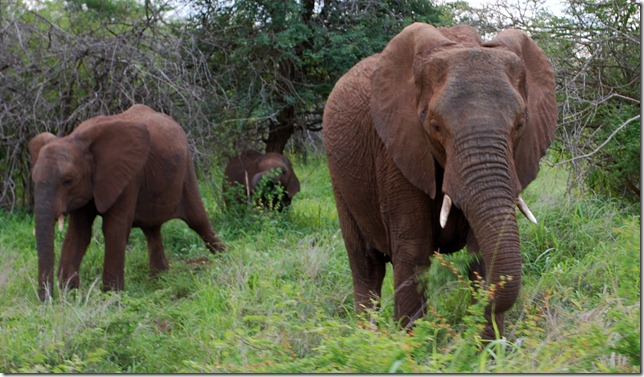 At first seeing elephants up close was thrilling, but by the end of the day on Saturday, we’d seen at least 200!
At first seeing elephants up close was thrilling, but by the end of the day on Saturday, we’d seen at least 200!
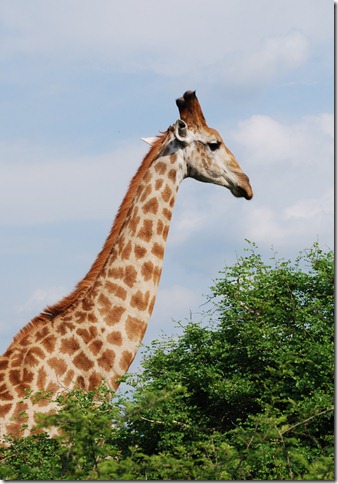 Giraffes were easy to spot and were surprisingly varied in color
Giraffes were easy to spot and were surprisingly varied in color
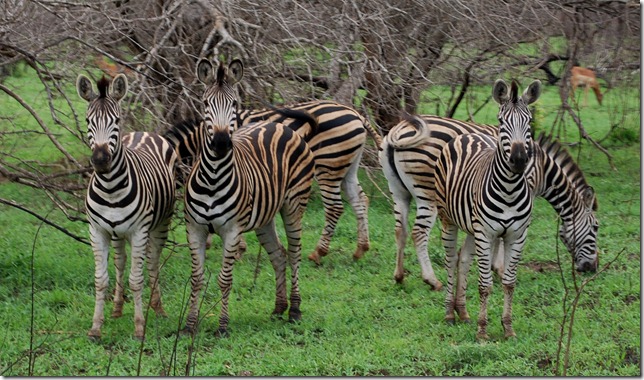 The zebras were the most wary of all animals, probably because they’re so easily spotted by predators
The zebras were the most wary of all animals, probably because they’re so easily spotted by predators
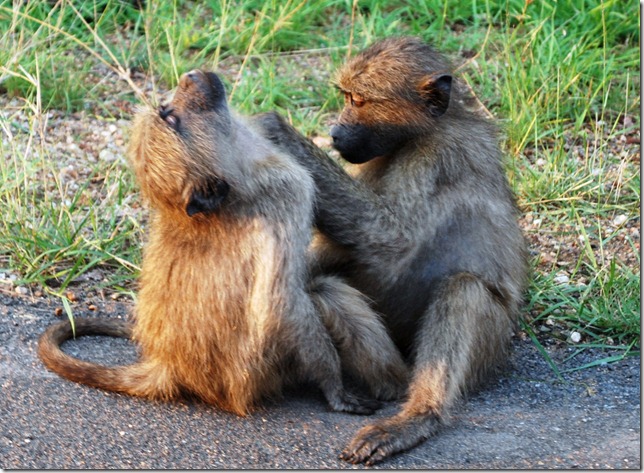 The baboons are very social creatures – where there’s one, there’s a troop nearby
The baboons are very social creatures – where there’s one, there’s a troop nearby
That’s all for now. I need to get some sleep — these South Africans can be hard to keep up with! We’ll post more photos of our sightings, accommodation, and the scenery along with a more detailed account of our time at Kruger and at the Maholoholo Rehabilitation Center as soon as we have a chance. Tomorrow we are going to see some of the sights of Jo’burg before returning to Durban (and Pura Vida) on Wednesday.

